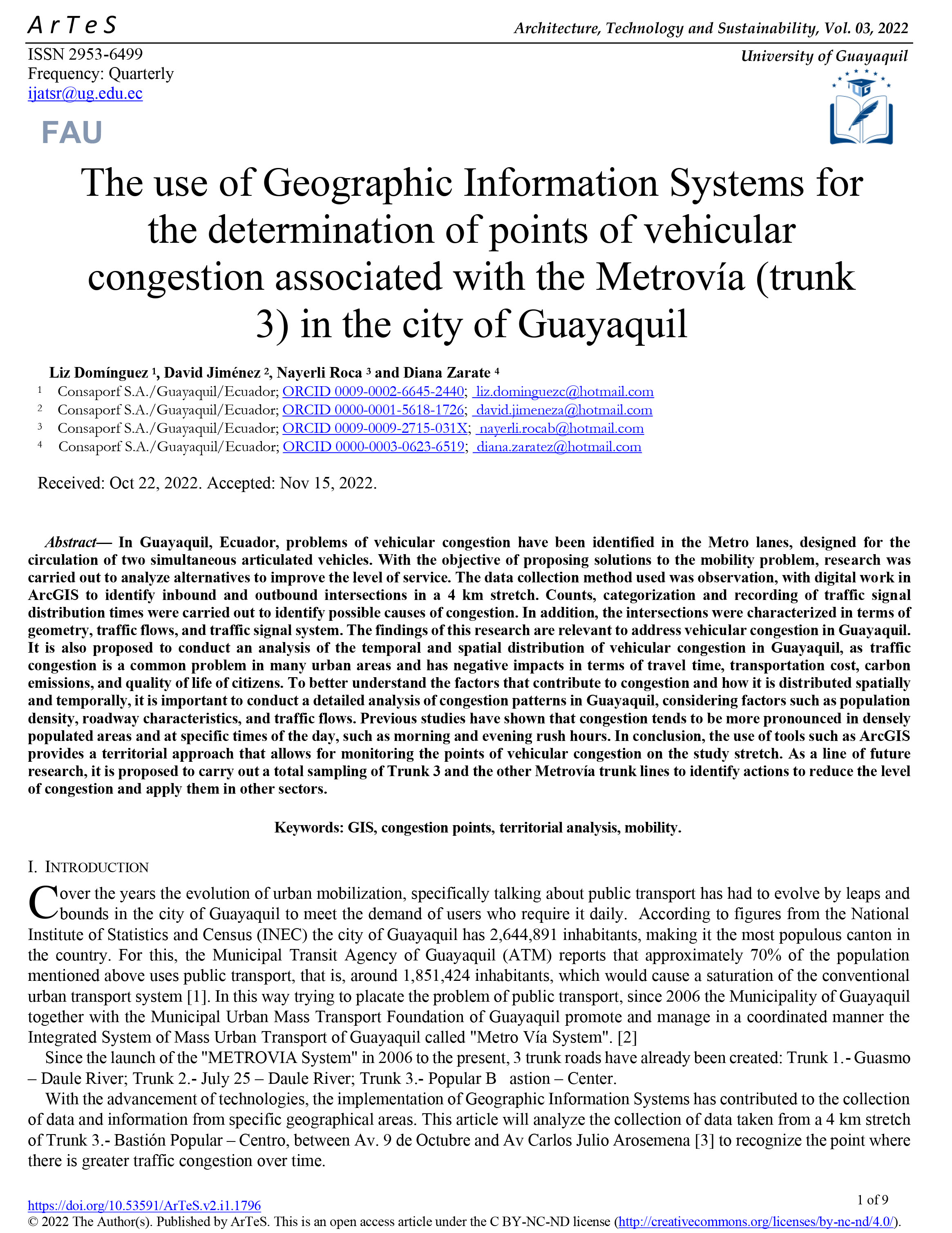The use of Geographic Information Systems for the determination of points of vehicular congestion associated with the Metrovía (trunk 3) in the city of Guayaquil
DOI:
https://doi.org/10.53591/ArTeS.v3.i1.2029Keywords:
GIS, congestion points, territorial analysis, mobility.Abstract
In Guayaquil, Ecuador, problems of vehicular congestion have been identified in the Metro lanes, designed for the circulation of two simultaneous articulated vehicles. With the objective of proposing solutions to the mobility problem, research was carried out to analyze alternatives to improve the level of service. The data collection method used was observation, with digital work in ArcGIS to identify inbound and outbound intersections in a 4 km stretch. Counts, categorization and recording of traffic signal distribution times were carried out to identify possible causes of congestion. In addition, the intersections were characterized in terms of geometry, traffic flows, and traffic signal system. The findings of this research are relevant to address vehicular congestion in Guayaquil.
It is also proposed to conduct an analysis of the temporal and spatial distribution of vehicular congestion in Guayaquil, as traffic congestion is a common problem in many urban areas and has negative impacts in terms of travel time, transportation cost, carbon
emissions, and quality of life of citizens. To better understand the factors that contribute to congestion and how it is distributed spatially and temporally, it is important to conduct a detailed analysis of congestion patterns in Guayaquil, considering factors such as population density, roadway characteristics, and traffic flows. Previous studies have shown that congestion tends to be more pronounced in densely populated areas and at specific times of the day, such as morning and evening rush hours. In conclusion, the use of tools such as ArcGIS provides a territorial approach that allows for monitoring the points of vehicular congestion on the study stretch. As a line of future research, it is proposed to carry out a total sampling of Trunk 3 and the other Metrovía trunk lines to identify actions to reduce the level of congestion and apply them in other sectors.

Downloads
Published
How to Cite
Issue
Section
License
Copyright (c) 2022 Artes: Architecture, Technology and Sustainability

This work is licensed under a Creative Commons Attribution-NonCommercial-NoDerivatives 4.0 International License.



